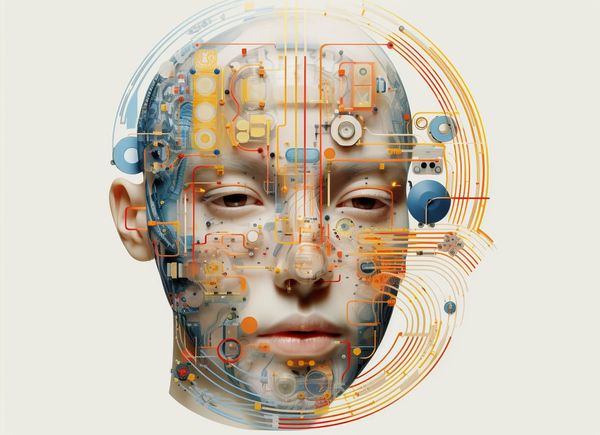Generative AI (GenAI) has transitioned from a phase of experimentation to becoming a strategic tool for business growth and efficiency. As we move into 2024, the integration of GenAI into enterprise strategies, the rise of bring-your-own-AI (BYOAI) practices among employees, and the pivot towards open-source models will underscore this technology's maturity and influence across industries. Furthermore, the development of insurance policies to cover AI-specific risks will exemplify the normalization and acknowledgement of genAI's role in the operational landscape.
Introduction: The Tipping Point for Generative AI
The year 2023 marked a significant milestone in the evolution of generative AI. Across various sectors, from tech giants to burgeoning startups, the pivot toward genAI has been unmistakable. Enterprises are no longer questioning if AI will be part of their business models but are instead contemplating how quickly they can integrate it into their strategic initiatives. This seismic shift is not just a response to technological advancements but a reflection of market demands and the competitive landscape.
Integrating GenAI into Enterprise Strategy
Strategic Shifts in AI Deployment
As we progress into 2024, the deliberate and strategic incorporation of genAI into business processes is becoming increasingly evident. The July 2023 AI Pulse Survey indicates that 67% of enterprises are now embedding genAI into their broader AI strategy. This marks a departure from the earlier days of AI, where emphasis was heavily placed on data science and standalone model building. The current trend signifies a move towards a more holistic approach, with technology leadership at the helm, steering genAI initiatives towards fulfilling business objectives.
From Experimentation to Execution
The transformation of genAI from a playground for tech enthusiasts to a core component of business strategy illustrates the maturation of AI as a field. This shift is not merely about adopting new tools but represents a deeper change in mindset. Businesses are moving beyond the allure of genAI’s novelty and are now focused on leveraging its capabilities to satisfy unmet demands and drive tangible growth.
The Rise of Bring-Your-Own-AI Practices
Employee-Led Innovation and Efficiency
A striking development in the AI space is the predicted surge in BYOAI. The forecast that 60% of workers will employ personal AI tools for their job tasks in 2024 speaks volumes about the bottom-up adoption of technology. This trend underscores a growing desire among employees for autonomy and efficiency, even if it means circumventing organizational security policies. Shadow AI, thus, emerges as a byproduct of the agility and innovation that workers seek in their professional endeavours.
Addressing the Challenges of BYOAI
The proliferation of BYOAI will undoubtedly raise concerns about regulatory compliance, privacy, and security. Organizations will be tasked with navigating this complex terrain while harnessing the benefits that such an organic diffusion of AI tools can offer. It presents an intricate balancing act between control and empowerment that enterprises will need to manage.
Embracing Open-Source Models for Flexibility and Growth
Diversification of AI Tools
The anticipated shift of 85% of enterprises towards open-source AI models represents a democratization of AI development. The success of proprietary models, such as those developed by OpenAI, has paved the way for a broader acceptance and reliance on open-source counterparts. This trend will likely lead to a more vibrant and diverse ecosystem where enterprises can tailor AI solutions more closely to their specific needs.
Implications for AI Strategy
The move to open-source models will not spell the end for proprietary AI but will instead offer a complement that enriches the AI landscape. It encourages a culture of collaboration and innovation, where enterprises can build upon shared advancements, thereby accelerating the pace of genAI's evolution and adoption.
Risk Management in the Age of AI
The Emergence of AI Risk Hallucination Policies
The prediction of a major insurer offering a specific AI risk hallucination policy in 2024 is indicative of the broader recognition of genAI’s impact on risk management. As genAI becomes more entrenched in business operations, the need to mitigate its unique risks becomes more pressing. This development will likely lead to specialized insurance products that address the nuanced challenges posed by AI technologies.
The Financial Implications
The advent of hallucination insurance points to the potential for new revenue streams within the insurance industry. It also reflects the changing nature of risk in a digitalized economy. As insurers adapt to these changes, they will play a pivotal role in enabling the continued growth and integration of AI by providing a safety net against its inherent uncertainties.
A New Era of Intentional AI?
As we forge ahead into 2024, the evolution of GenAI from an experimental endeavour to a strategic business imperative is unmistakable. The intentional application of AI technologies, spearheaded by insightful leadership and driven by demand, sets the stage for a year of growth and innovation. With employees embracing BYOAI, the expansion of open-source models, and the emergence of AI-specific risk management strategies, we are on the cusp of a new era where AI is not just a tool but a transformative force in business and beyond.








